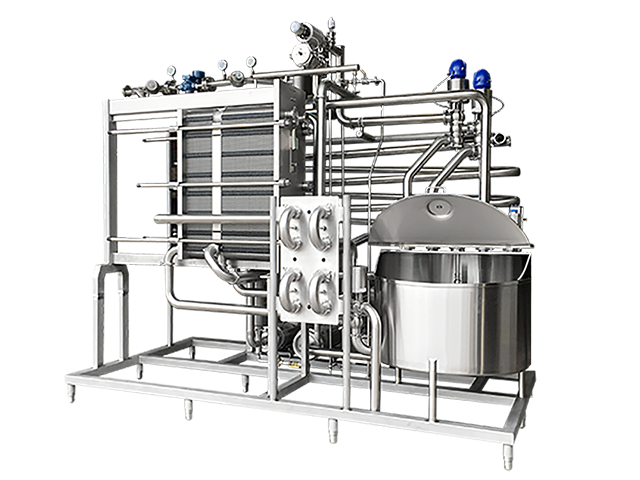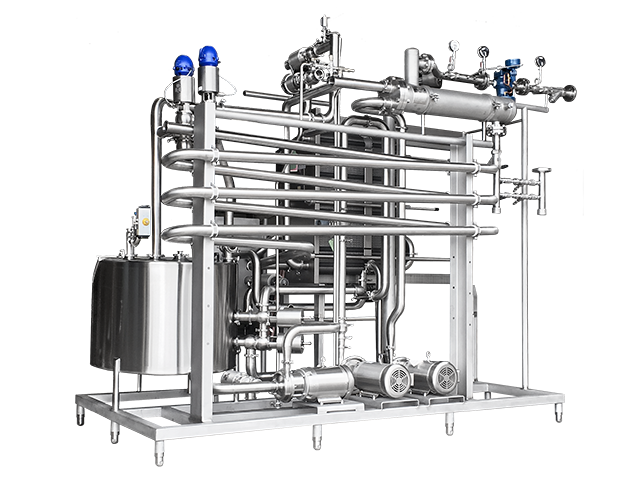HTST Pasteurizers
HTST Pasteurizers
HTST (high temperature, short time) pasteurization is also commonly called flash pasteurizing or continuous method pasteurizing. Our skid-mounted HTST pasteurizer systems are custom-designed to meet your needs and fit your facility space perfectly.
- High-quality stainless steel construction
- Skid mounted design allows for quick installation and easy cleaning
- You define the temperature and holding time needed, we build to suit
- Pre-heating, pasteurization, regeneration and cooling in one unit
- Include high-efficiency plate and frame heat exchangers
- Include pumps, valves, holding tubes and tank
- Variety of control hardware available
- Self-cleaning
Meet or exceed USDA sanitary standards.
Koss experience
We are experienced with the sealing, start-up, safety and legal requirements of HTST pasteurizers. We are familiar with the processes and protocols necessary to obtain state approvals and ensure we receive these approvals before we begin the build process. Put your HTST pasteurizer in experienced hands for a smooth and timely design and fabrication process.
More Reasons to Choose Koss >
For further reference ...
More about pasteurization methods
Batch Pasteurization - This is the simplest and oldest method of pasteurization. Product is heated in a tank and held at that temperature for a specified amount of time. The product must be stirred or agitated constantly. Batch pasteurization offers a lower start-up cost than HTST and is ideal for small volumes. It requires less demand on your utilities and provides a lower overall shear making it ideal for highly viscous products.
HTST Pasteurization - Flash pasteurization, as it is often called, is especially common for higher volume processing. Typically, the initial start up cost is higher than batch pasteurization but it is faster and more energy efficient. The HTST pasteurization method is less destructive to proteins and is ideal for low viscosity products. HTST is also easier to automate.
When pasteurizing milk with an HTST pasteurizer, the milk is exposed to elevated temperatures for less time than batch pasteurizing resulting in less denaturation of the whey proteins. Denatured whey proteins "hold" water leading to poor stretch in pasta filata cheeses, poor coagulation in sweet curd cheeses, and poor drainage for acid drained curd used in goat cheese production.
Both methods of pasteurization are effective at killing harmful bacteria which can cause "off" notes and flavors or even foodborne illnesses. Your operation and application needs will help determine which method is best for you.
Batch Pasteurizing =
Lower initial cost
Ideal for small volumes
Total utility demand is less
Lower product shear, easier on fat
Ideal for high viscosities (ice cream, cream, ricotta cheese)
Slower processing times
Harder to automate
HTST Pasteurizing =
Higher initial cost
Ideal for large volumes
More energy efficient
Less denaturation of whey proteins
Ideal for low viscosities (fluid milk)
Faster processing times
Easier to automate


